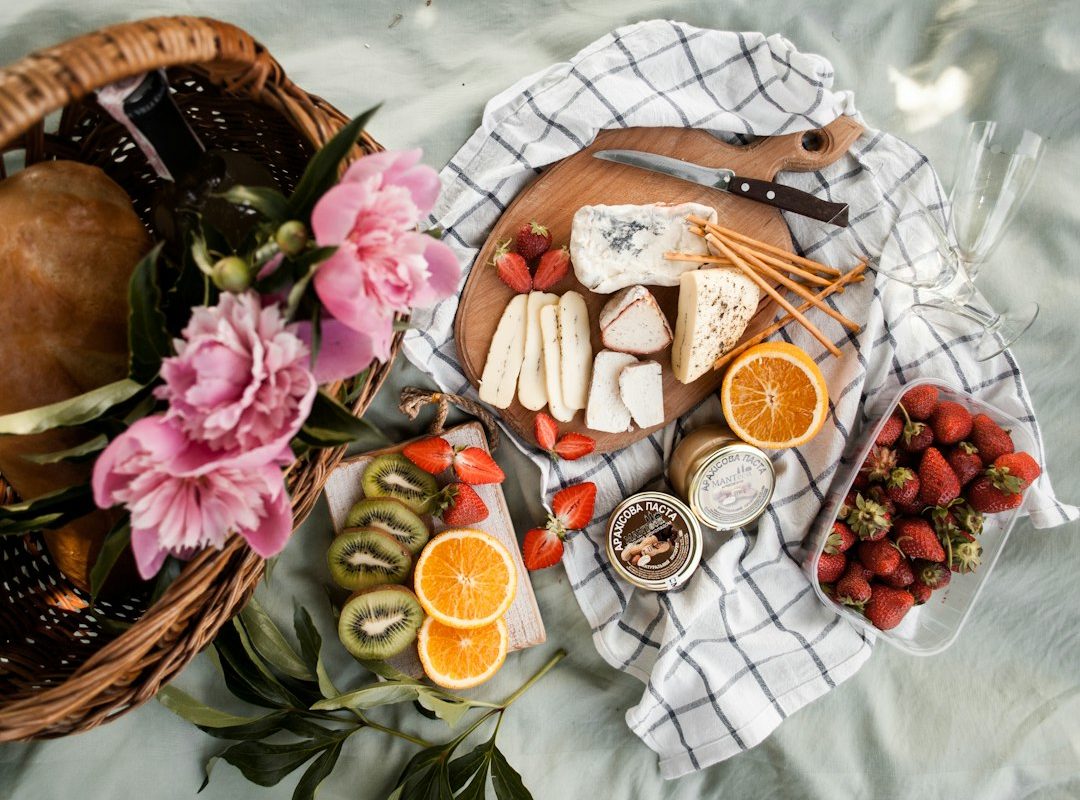When it comes to enjoying a picnic outdoors, one of the key elements that can make or break the experience is the temperature of the food. Keeping food warm during a picnic is not only important for maintaining its delicious taste but also for ensuring food safety. Warm food can be comforting, especially on a cool day, and can enhance the overall enjoyment of the outdoor dining experience. Whether you’re planning a family picnic in the park or a romantic meal on the beach, knowing how to keep your food warm is essential.
Warm food offers numerous benefits during picnics. Firstly, warm food is more appetizing and enjoyable to eat compared to cold or lukewarm dishes. The flavors of many dishes are enhanced when served at the right temperature, allowing you to fully appreciate the effort put into preparing the meal. Additionally, warm food can provide comfort and warmth on chilly days, making your picnic experience more cozy and inviting. Lastly, keeping food warm also helps prevent the growth of harmful bacteria that can cause foodborne illnesses, ensuring that your picnic is not only delicious but also safe to eat.
Key Takeaways
- Keeping food warm for picnics is important for both taste and safety reasons.
- Choose a container that is well-insulated and has a tight-fitting lid.
- Preheat your container and use hot water bottles or towels to keep food warm.
- Wrap food in foil or plastic wrap to prevent heat loss.
- Use insulated bags or coolers to transport and keep food warm.
Choosing the right container for keeping food warm
Selecting the appropriate container for keeping food warm is crucial in maintaining the desired temperature of your dishes during a picnic. There are various types of containers available, such as insulated food jars, thermal bags, and thermal cookers, each designed to retain heat and keep your food warm for an extended period. When choosing a container, consider factors such as size (to accommodate the amount of food you plan to bring), insulation quality (to ensure heat retention), and portability (for ease of transport).
Insulated food jars are ideal for keeping soups, stews, or hot beverages warm during picnics. These containers are typically made of stainless steel with double-wall insulation to preserve heat. Thermal bags are another popular option for transporting warm dishes to picnics. These bags are lightweight, easy to carry, and come in various sizes to suit your needs. Thermal cookers, on the other hand, are designed to slow-cook food using retained heat and are perfect for keeping dishes warm until ready to serve.
Preparing food for optimal warmth retention
To ensure that your dishes stay warm throughout your picnic, proper preparation is key. Start by cooking your food to the right temperature before packing it for your outdoor meal. Use a meat thermometer to check that meats are cooked thoroughly and at a safe internal temperature. Additionally, consider using warm ingredients in your recipes to help maintain heat levels during transportation.
Avoid using cold ingredients straight from the refrigerator when preparing dishes for a picnic as this can lower the overall temperature of the food. Instead, allow ingredients like meats, vegetables, and sauces to come to room temperature before assembling your dishes. This will help retain heat and ensure that your food stays warm longer once packed in insulated containers.
Wrapping food to maintain temperature
Properly wrapping your food can help maintain its temperature and prevent heat loss during transportation to your picnic location. Aluminum foil is a versatile option for wrapping individual portions or larger dishes like casseroles. It helps retain heat and can be easily molded around different shapes of food containers.
Plastic wrap is another useful tool for sealing in warmth and preventing air from reaching your dishes. It works well for covering plates or bowls of food before placing them in insulated bags or coolers. Insulated food wrap is specifically designed to keep hot foods warm by providing an extra layer of insulation. It is often used in conjunction with other wrapping materials for added heat retention.
Using insulated bags and coolers
Insulated bags and coolers are essential tools for keeping food warm during picnics by providing an additional layer of insulation to retain heat. Insulated bags come in various sizes and styles, including tote bags, backpacks, and shoulder bags, making them convenient for transporting hot dishes while maintaining their temperature.
Coolers with built-in insulation are also effective at keeping hot foods warm by preventing heat from escaping. Look for coolers with thick walls and tight-sealing lids to ensure maximum heat retention. Some coolers even come with heating elements that can be plugged into a car adapter or power source to keep dishes warm while on the go.
Utilizing heat sources for extended warmth

In addition to insulated containers and wraps, utilizing heat sources can help keep your food warm for an extended period during a picnic. There are various types of heat sources available, such as hot packs, hand warmers, and portable stoves, that can be used to generate additional warmth for your dishes.
Hot packs are small disposable packets that generate heat when activated and can be placed alongside dishes in insulated containers to help maintain their temperature. Hand warmers are another option for providing extra warmth by placing them at the bottom of coolers or insulated bags before adding your dishes. Portable stoves or camping stoves can also be used to reheat dishes on-site if needed, ensuring that your food stays warm until it’s time to eat.
Tips for keeping specific dishes warm
Different types of dishes require specific methods for keeping them warm during a picnic. For soups and stews, consider using insulated thermoses or vacuum-sealed containers to maintain their temperature. Preheating these containers with hot water before adding the soup or stew can help keep them warmer longer.
Casseroles can be kept warm by wrapping them in aluminum foil or placing them in insulated baking dishes before packing them in an insulated bag or cooler. To prevent overcooking or drying out grilled meats like chicken or steak, consider wrapping them in foil after grilling and then placing them in an insulated container until ready to serve.
Timing and transportation considerations
Timing is crucial when preparing food for a picnic to ensure that it stays warm until it’s time to eat. Cook hot dishes as close to your departure time as possible and pack them while still hot to retain their warmth longer. Consider using preheated containers or wraps to help insulate the heat during transportation.
When transporting hot foods to a picnic location, place them in an insulated bag or cooler immediately after packing them to minimize heat loss. Avoid opening the container frequently during transit as this can cause heat escape and lower the overall temperature of the dishes.
Safety precautions when keeping food warm
To prevent foodborne illnesses when keeping food warm during picnics, it’s essential to follow proper safety precautions. Avoid leaving perishable foods out at room temperature for extended periods as this can promote bacterial growth and lead to contamination.
Practice good hygiene by washing hands before handling food and using clean utensils and containers when packing meals for picnics. Store hot foods above 140°F (60°C) and cold foods below 40°F (4°C) to maintain safe temperatures and prevent bacterial growth.
Conclusion and final thoughts on keeping food warm for picnics
In conclusion, keeping food warm during picnics is not only important for maintaining taste but also for ensuring safety when dining outdoors. By choosing the right containers, preparing dishes properly, wrapping foods effectively, using insulated bags and coolers, utilizing heat sources strategically, following specific tips for different types of dishes, considering timing and transportation factors, practicing safety precautions, you can enjoy delicious and safe meals during your outdoor gatherings.
Remember that with a little planning and attention to detail, you can keep your picnic foods at optimal temperatures throughout your outdoor dining experience. So next time you head out for a picnic with family or friends, use these tips and tricks to ensure that your meals stay warm and enjoyable from start to finish!
If you’re planning a picnic and looking for the perfect wine to pair with your outdoor feast, check out this informative guide to Sauvignon Blanc Australian wine. Understanding the nuances of different wines can elevate your picnic experience and impress your guests. Pairing the right wine with your food can enhance flavors and create a memorable dining experience. So, whether you’re enjoying a casual picnic or a more formal outdoor gathering, this article can help you make the most of your wine selection.







